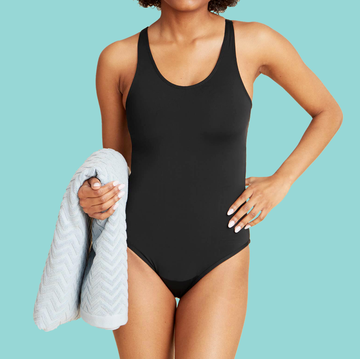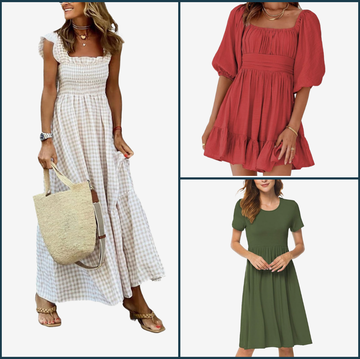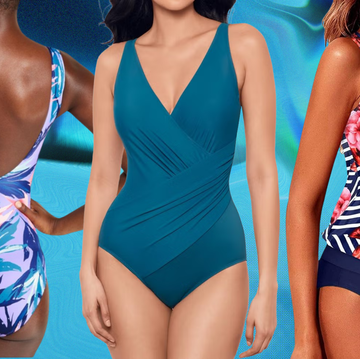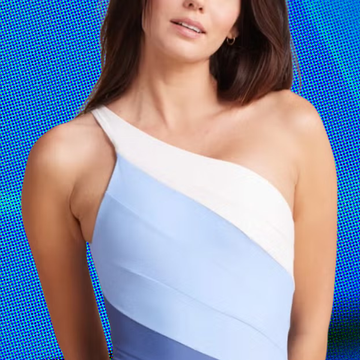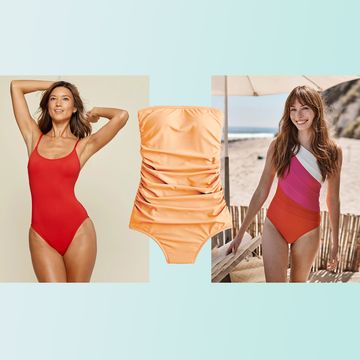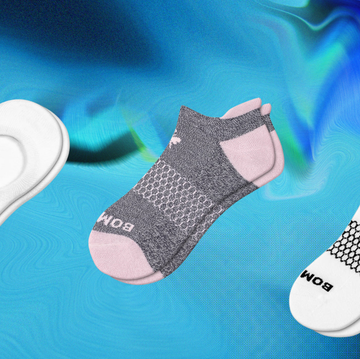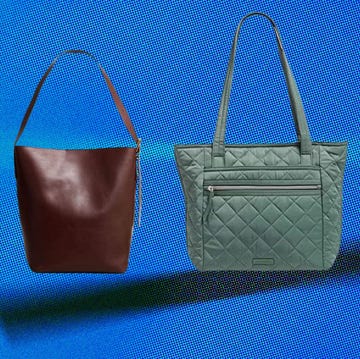Because I lead footwear testing for the Good Housekeeping Institute Textiles Lab, I own dozens of sneakers. I have tried every type of sneaker out there, including everything from those with thick plush cushioning to barefoot shoes like Vivobarefoot. These sneakers are extremely minimal with a barefoot design, so you feel the ground beneath you. After testing a few different styles from the brand, I think the Primus Flow is best suited for most barefoot sneaker aficionados, but isn't a great introductory shoe for barefoot shoe newbies.
What are barefoot shoes?
Barefoot shoes (also known as minimalist sneakers) are designed to feel similar to walking on the ground sans shoes while offering protection from dirt or debris. They have a zero heel drop, so your heels and toes are level to mimic your natural foot alignment and movement. Many choose barefoot shoes to strengthen their feet and feel the ground better beneath them.
Some may choose not to wear socks with barefoot shoes, but I recommend wearing socks because it's more hygienic and prevents rubbing. They lack any substantial cushioning or stability like traditional sneakers, so they're not well suited for people with foot or joint pain. It can take time for your feet to adjust to barefoot shoes after a lifetime of wearing more supportive shoes.
Vivobarefoot review
Vivobarefoot shoes are barefoot shoes designed with sustainable materials and a sleek attractive look. The brand offers styles designed for everyday wear, the gym, running and more. Here are the key factors I evaluated when testing the Primus Flow sneakers.
Sizing and fit
I found the shoes to run true to size. If you are between sizes or have very narrow feet, I would recommend going down half a size. My feet are on the narrow side, so the roomy toe box was a bit big for me, but I liked that my toes could sprawl out and they didn't feel cramped whatsoever. This type of roomy toe box helps encourage your toes to spread out, which can help reduce the risk of developing bunions.
Materials
The barefoot design lacks an insole like most sneakers have. The brand uses recycled polyester for the upper and laces for a lessened environmental impact. The mesh upper is durable and airy, but isn't as comfy as knit uppers, which I prefer. The midsole and outsole use two types of plastic materials popular in footwear for shock absorption and long-term durability.
These materials are very lightweight, so the whole shoe weighs under 5 ounces – many of our top-tested sneakers weigh nearly twice that!
Comfort
I have worn barefoot shoes before, so I am used to the zero heel drop design and minimal stability. The other pairs of barefoot shoes I tried had a more contoured footbed, which I preferred. The Vivobarefoot footbed is very flat, so I could feel a gap between my arch and the footbed. This caused my arch to ache a bit after a whole day of wearing them. If you're new to barefoot shoes, a style with a bit more support would be an easier transition.
Overall, I found them comfortable to wear. I personally prefer wearing sneakers with cushioning on longer walks. I only run short distances and found these shoes comfortable without any foot pain. GH Nutrition and Fitness Director Stefani Sassos, M.S., R.D.N., NASM-CPT, a certified personal trainer, says she wishes this pair had a bit of cushion on the bottom, otherwise "you could develop foot fatigue after long distances." Because the shoes are very bendy, I did find that the shoe would crease by my toes during some moves in the gym like lunges and planks, which was uncomfortable.
Traction
The Primus Flow style lacks traction. The grooves are very shallow, and on slick flooring, they were prone to sliding. I also tested the Motus Studio Sneaker which had great traction and is better suited for gym use.
Appearance
I was surprised by how much I liked the appearance of the Vivobarefoot shoes. I have tested many pairs of barefoot-style shoes and found them to be ugly, meanwhile this pair has a sleek look I prefer. I also liked the bold color options too, making them great to wear in and out of the gym. I styled them with leggings and jeans, wearing them during workouts and out and about exploring the city. The Primus Flow has a mesh upper that is a bit see-through, so make sure to wear matching socks accordingly.
What I like about the Vivobarefoot shoes
The barefoot design allowed me to feel the ground beneath me, which felt empowering during gym sessions. The flat design felt stable when lifting weights and was generally comfortable when walking around. I like that the brand uses sustainable materials like recycled polyester for the upper and laces.
Important to know
The shoes are a true barefoot shoe. In our testing, they proved to be durable and well designed. But, they didn't offer any arch support and were a harsher transition from traditional sneakers. If you're new to barefoot shoes, I'd recommend starting with a more supportive style like the Merrell Vapor Glove 5. The Vivobarefoot shoes are best suited for someone who wants to feel the ground beneath them with no insole.
Vivobarefoot vs. Hoka
Vivobarefoot and Hoka offer drastically different shoes. Vivobarefoot is focused on a barefoot feel while Hoka is known for their plush cushioning — they are as different as two things can possibly be! Thick cushioning is popular for people with joint sensitivities or pain. Long distance runners can also benefit from some cushioning.
When I'm wearing Hoka sneakers, I feel less stable because I am further from the ground compared to the Vivobarefoot shoes. That said, my arches and feet feel more supported in Hoka sneakers. Hoka and Vivobarefoot shoes are both sneakers designed for an active lifestyle, but that's about where their similarities end.
Are Vivobarefoot shoes worth it?
If you are already familiar with barefoot shoes, I think Vivobarefoot is a great option; they're sleek, well-constructed, comfortable to wear and super lightweight. But, they lack any meaningful support and are pricey, so I wouldn't recommend them as someone's introduction to barefoot shoes.
When I wear barefoot shoes, I like that I can feel the ground better beneath me and my toes have space to spread out. However, I wouldn't wear them for every occasion. For long walks or traveling, I would personally opt for something with more cushioning, which also prevents you from feeling every pebble you step on. I'll still wear my barefoot shoes regularly as they're comfortable and help encourage foot strength.
Why trust Good Housekeeping?
As the Associate Textiles Lab Director, Emma Seymour leads all footwear testing for the Good Housekeeping Institute. She has tested all types of shoes, including barefoot shoes, running shoes, walking shoes, hiking boots, sandals and more. She walked in Vivobarefoot shoes for over 50,000 steps, went on runs and wore them during gym workouts before writing this review.
Emma Seymour (she/her) is the associate director of the Good Housekeeping Institute's Textiles, Paper and Apparel Lab, where she has led testing for luggage, pillows, towels, tampons and more since 2018. She graduated from Cornell University with a bachelor of science in fiber science and apparel design and a minor in gerontology, completing research in the Body Scanner Lab on optimizing activewear for athletic performance.










